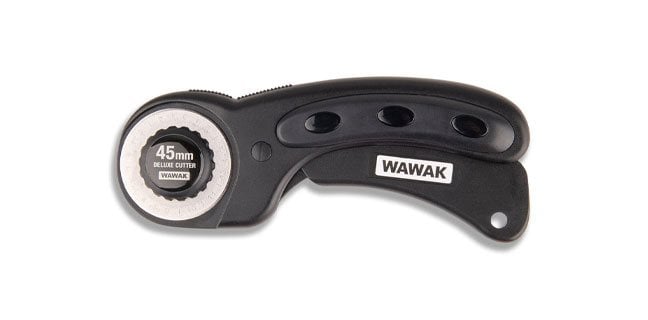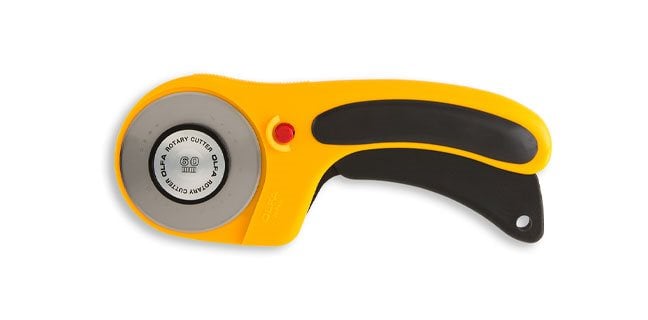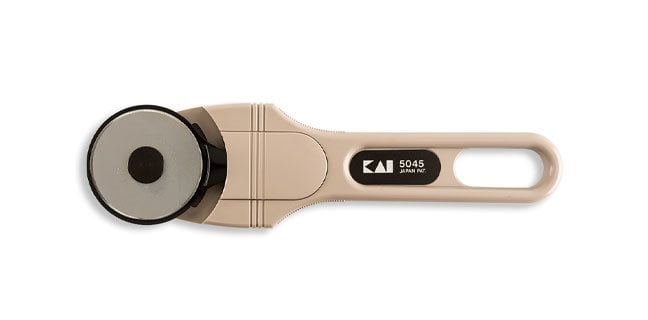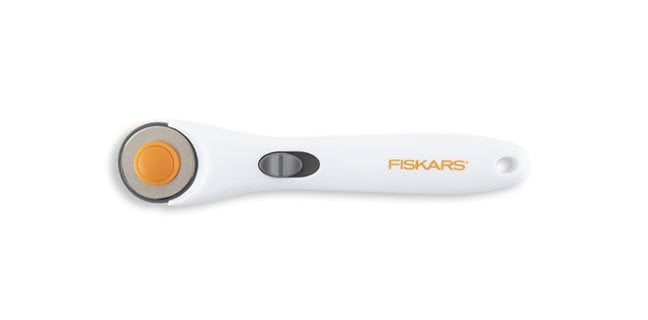OLFA Deluxe Ergonomic Rotary Cutter - 45mm
| {{resource("/Shared/Label/QuantityTable/Qty")}} |
{{volumePrice.Quantity}}+ {{resource("/Shared/Label/QuantityTable/Each")}}
{{volumePrice.Quantity}}+
|
|---|---|
| {{resource("/Shared/Label/QuantityTable/Price")}} | ${{volumePrice.Price.Amount | toDisplayFormat}} |
| {{resource("/Shared/Label/QuantityTable/Save")}} |
—
{{volumePrice.Save | toDisplayFormat}}%
|
{{format(resource('/ProductPage/Labels/SoldInIncrementOf'),displayVariant.SoldInIncrements)}}
{{format(resource("/ProductPage/Labels/MinimumOrderQuantity"),displayVariant.MinimumOrderQuantity)}}
Shop Rotary Cutters From Your Favorite Fabric Cutting Brands
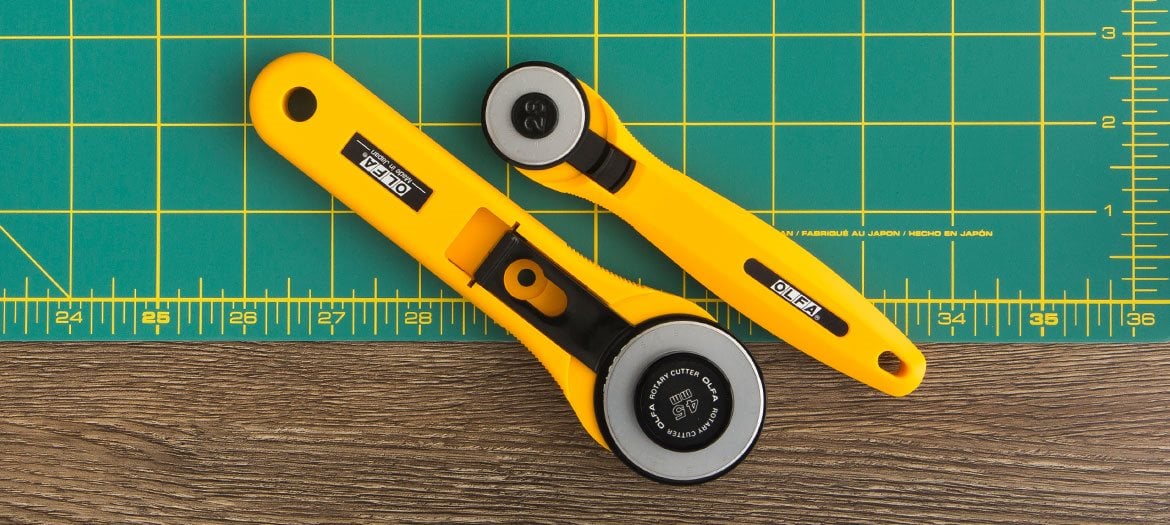
Should I Use Scissors or A Rotary Cutter?
Choosing between Scissors and Rotary Cutters is a much-debated topic—but the answer depends mostly on the type of project you intend to use it on! Both are excellent fabric cutting tools with their own advantages. Rotary cutting tools are great for making very clean cuts, and cutting a lot of material quickly. They also allow you to cut through multiple layers of fabric at once. With scissors or shears, you gain the advantage of more control, which is great for cutting small, tight corners or precise angles and curves. Aside from these distinct advantages, which cutting tool is right for you is largely a matter of personal preference and comfort.
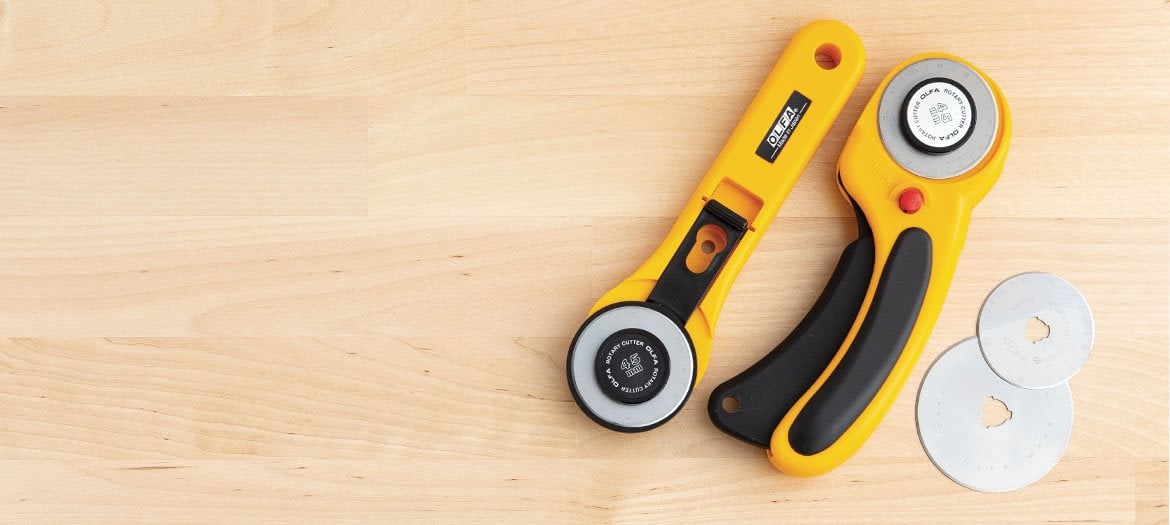
Changing an OLFA Rotary Cutter Blade
Keeping a sharp blade on an OLFA Rotary Cutter is extremely important to cutting fabric cleanly and safely. For best results, change the blade of your OLFA Rotary Cutter at the beginning of every new project or more often with frequent use. To change an OLFA replacement blade, unscrew the outermost piece and remove the other components. Re-assemble them in the same order, switching out the used blade for a new one. Make sure that the washer is facing so it curves outward. Tighten the outer piece until snug but not too tight, then dispose of the used blade safely by placing it in the opened packaging and taping it shut.
Making Clean Cuts with a Rotary CutterTo make the best possible cuts with your OLFA Rotary Cutter, always be sure that the blade is sharp and free of nicks or other damage. If you find that your rotary cutter is not cutting through the material completely or is skipping sections, it is most likely the sign of a damaged or dull blade. Cut while standing whenever possible, moving the blade away from yourself and applying light, even pressure for the duration of the entire cut. Use a Self-Healing Cutting Mat to protect your cutting surface and keep rotary blades sharp for longer, and cut along the edge of a Ruler to ensure straight cuts. |


